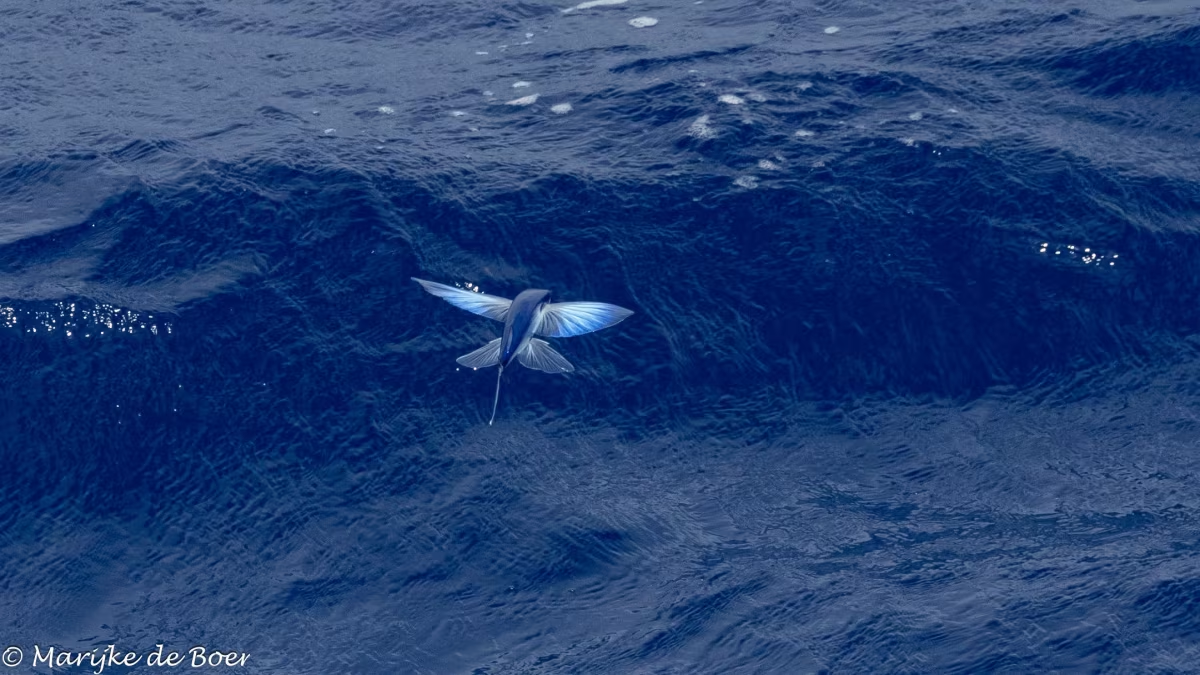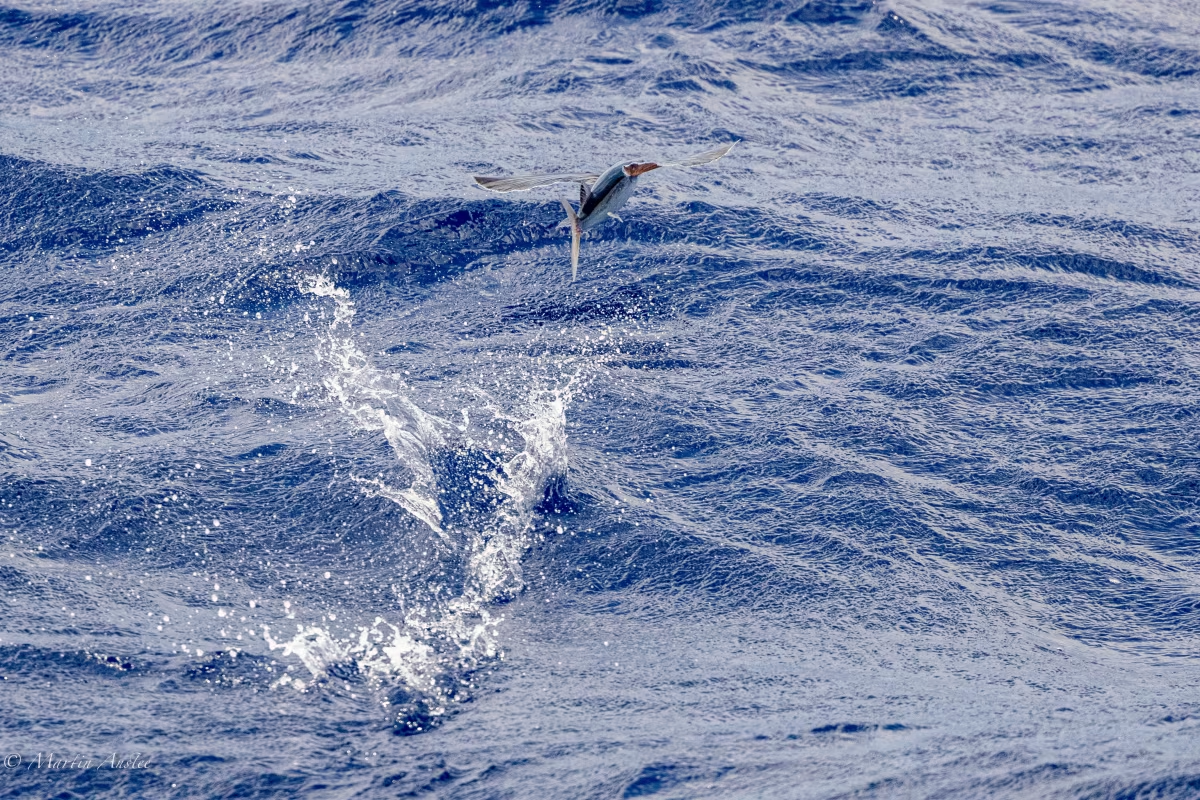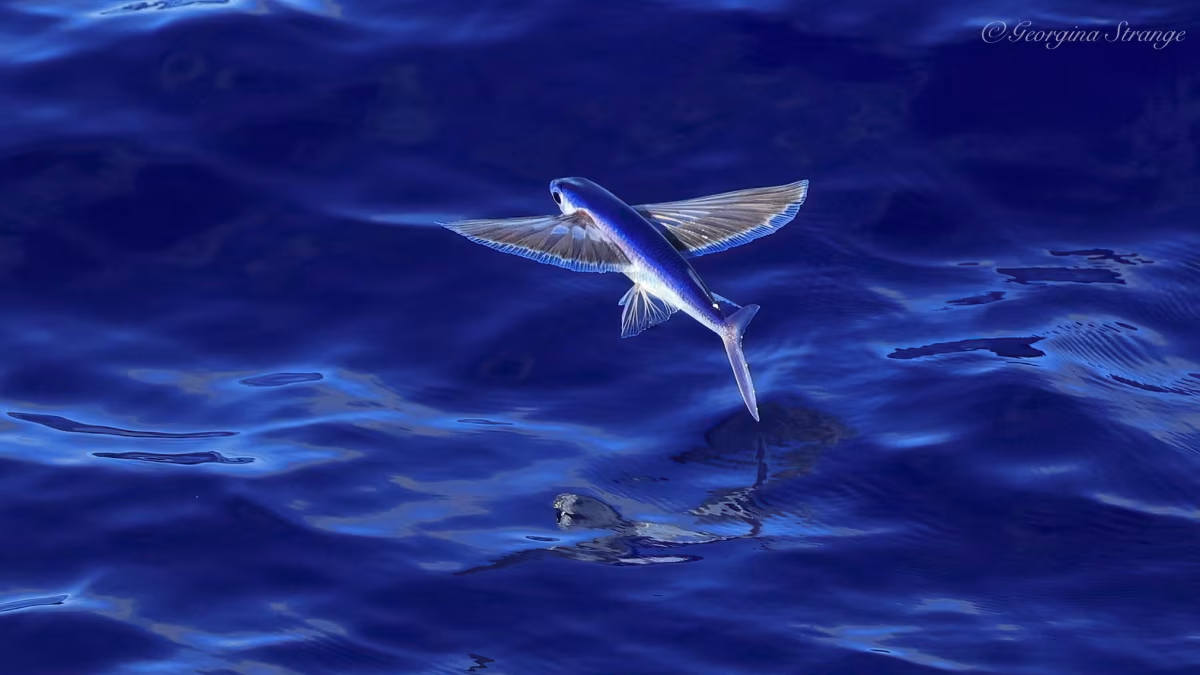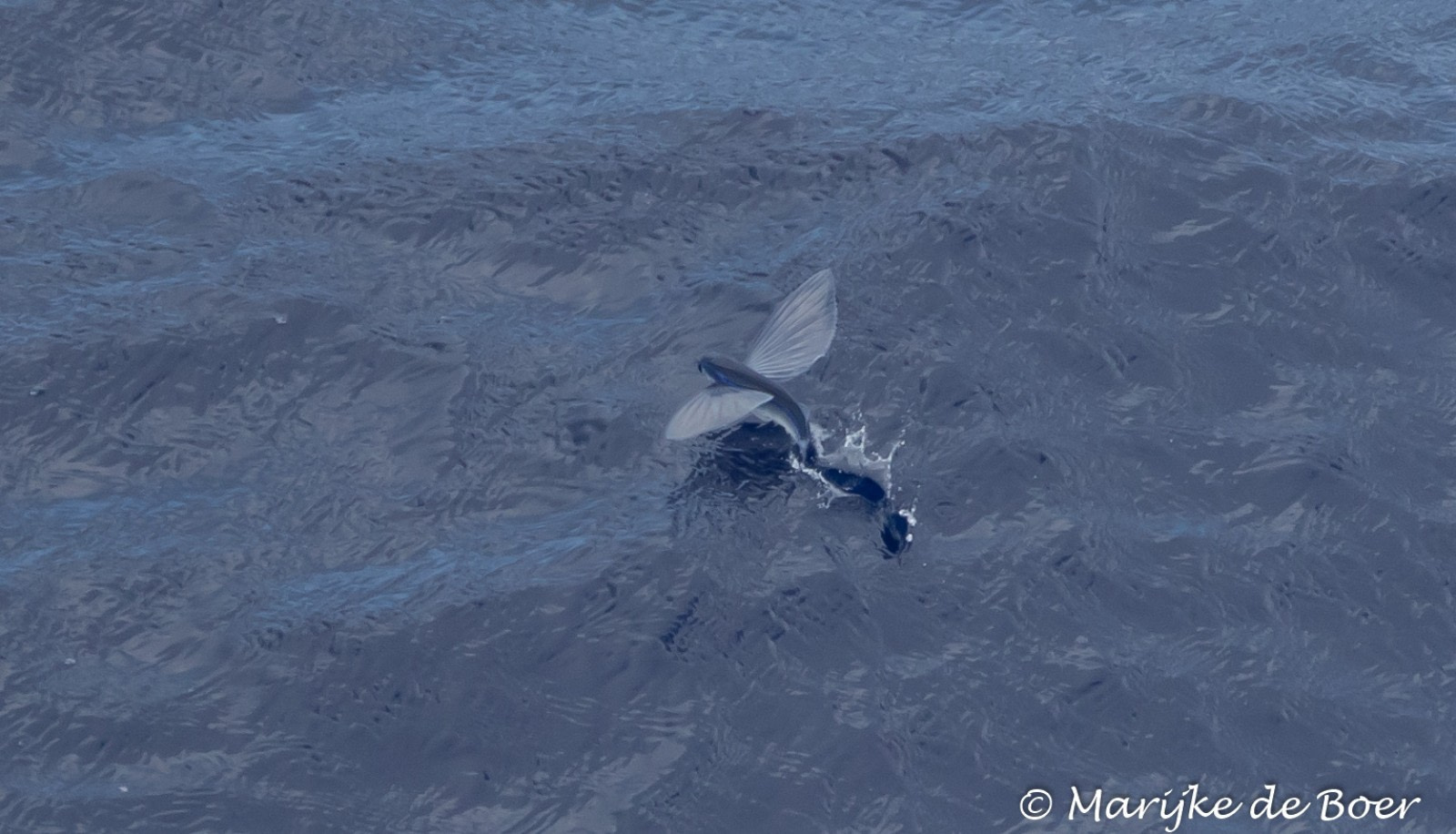Name: Flying Fish (Exocoetidae)
Length: Up to 50cm
Weight: Up to 900g
Location: Worldwide, more prevalent in tropical and subtropical waters
Conservation status: Least concern to critically endangered
Diet: Mainly plankton & small crustaceans
Appearance: Silvery-gray with colorful, large, transparent fins
Why are they called flying fish?
Flying fish get their name from their remarkable ability to glide above the water's surface. Although they don't truly "fly" like birds, they use rapid fin movements and specialized wing-like pectoral fins to launch themselves out of the water and soar through the air. They can 'fly' for distances of up to 200 meters! This unique way of moving helps them evade underwater predators. It also makes for a spectacular sight at sea.

Picture by Marijke de Boer
Why do they leap from the water?
While it's a nice thought to think flying fish are leaping from the ocean to explore the world beyond, it's generally agreed that flying fish use their flying ability to evade predators in the waters below.
How do flying fish 'fly'?
Flying fish technically don't fly! Instead, they use their enlarged fins to make use of updrafts and air currents to glide above the water. They have certain other characteristics that make them better gliders, including a streamlined body and an adapted skeleton and connective tissue, which provide rigidity and additional strength for the fish to propel themselves out of the water and into the air.
Where are flying fish found?
While they are found in almost all of the world's oceans, Flying fish are most commonly found in the warm, tropical, and subtropical waters of the Atlantic, Pacific, and Indian Oceans. They prefer open ocean environments and often travel in large schools near the surface, where they can take advantage of ocean currents and breezes to glide efficiently.

Picture by Martin Anstee
How many species of flying fish are there?
There are at least 40 recognized species of flying fish, all belonging to the family Exocoetidae. These species vary in size and appearance, but all share the same ability to soar above the waves. Some even have enlarged pelvic fins in addition to their pectoral fins, giving them a "four-winged" appearance in flight.
Can I see flying fish on an expedition cruise?
Absolutely! Flying fish are often spotted leaping out of the water during our Atlantic Odyssey expedition cruise itinerary, especially as our vessels approach the warmer waters of the mid-Atlantic. Guests on deck frequently see these shimmering fish gliding just above the waves, sometimes in large groups.
They, in turn, attract seabirds, some of which are rare species only found in areas such as Tristan da Cunha, Gough Island, St Helena, Ascension Island, and Cape Verde. Keep your eyes on the water and the skies above when flying fish appear — you might catch them taking flight alongside dolphins or dodging seabirds!

Picture by Georgina Strange
Six fantastic flying fish facts
- The record flight time for a flying fish is 45 seconds!
- Flying fish can cover distances of up to 400m (1,300ft) in the air.
- Flying fish can travel at speeds of over 70 km/h (43mph).
- Barbados is known as the Land of the Flying Fish.
- The flying fish is the national symbol of Barbados.
- The Exocet missile is named after the flying fish family, Exocoetidae.
Main image by Marijke de Boer






